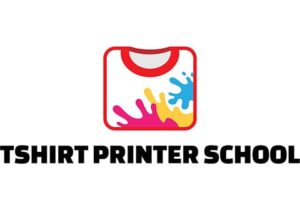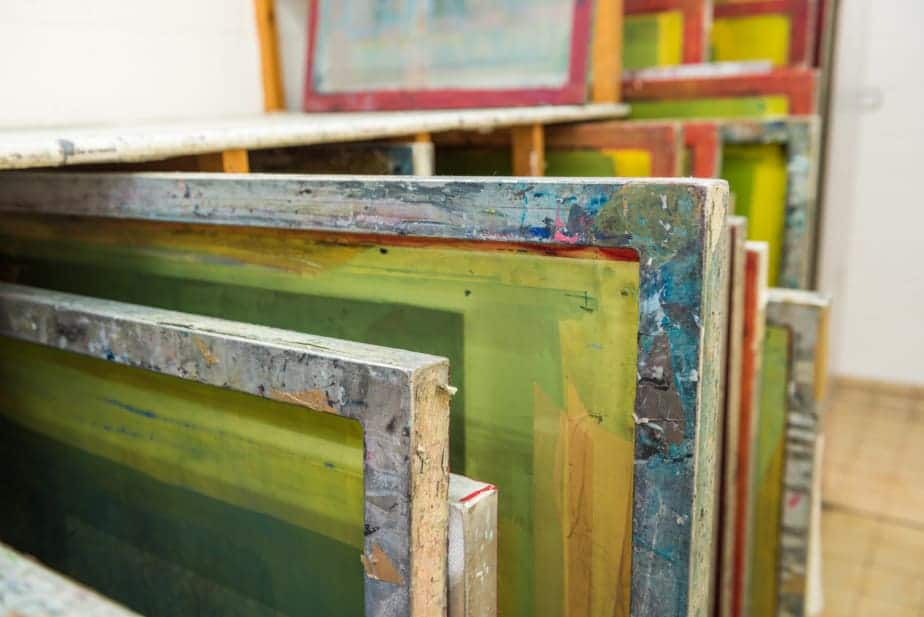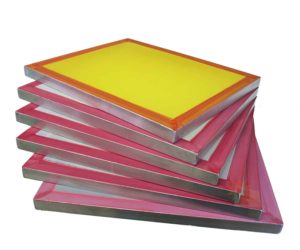Wanting to know the best screen printing inks, the best brands for screen printing machines, or the best designs are just some of the commonly asked questions when it comes to the screen printing business. Especially for those who are new in the industry. While finding answers to these questions is essential, knowing how to choose the right screen print mesh count is equally vital.
Having the right screen print mesh count may even be the determining factor whether or not your design will be visible on your garment, and if this design will appear as beautiful as it is supposed to be.
Before knowing the ideal screen print mesh count to use, first, you have to decide on what design you want to print on the shirt as well as the type of screen printing ink you would have to use for it. The suitable screen print mesh count would majorly be dependent on the design itself as well as the nature or thickness of the screen printing ink you will use.
What is Mesh Count or Mesh Size?
Mesh count refers to the number of threads the mesh has per square inch. The lower the mesh count, the bigger the holes on the mesh screen, which means more ink can go through. The higher the mesh count, the smaller the holes with less ink going through, and the more detailed the print.
Importance of Choosing the Right Screen Print Mesh Count or Size
Choosing the wrong mesh count or mesh size for screen printing might result in wasteful, costly, and – most of the time – irreversible screen printing errors. We all know that more often than not, once the ink of your printed design seeps and sets into the shirt, it would be impossible to remove.
A few common mistakes made by novice screen printers are:
– Using a low count mesh with a detailed design, distorting the intricate details of the design. This is due to more ink coming through the screen than needed coming through the screen and spreading out more than expected.
– Using a high count mesh with thicker inks that aren’t able to pass through the mesh evenly. Inks such as gel, glitter, plastisol, and white inks tend to be thicker and will not pass through the high count mesh as easily as some other inks and will not make it on to the garment.
Most Common Screen Print Mesh Counts
For you to determine the right screen print mesh count, you have to know how to read various mesh counts correctly and what each size or count means. Most of the time, you will be able to see mesh counts appearing like this: 20/T, 230/SS, or other combinations of numbers and letters. While it is easy to understand the numbers themselves stand for the actual mesh count, the letters represent measurements for the mesh diameter. There are five standard mesh diameter measurements in America: SS, S, M, T, and HD.
• SS – Extremely thin threads
• S – Thin threads
• T – Regular or Medium threads
• HD – Thick, or Heavy Duty Threads
Some mesh screen companies also have an ‘M’ mesh diameter measurement, which refers to the thread measurements in between S and T.
Finding Out the Right Mesh Count for Your Design
Now that we know the basics of mesh count or mesh size, we can move on to the most common screen print mesh counts for various mesh screens:
10/S to 61/S Mesh Count
Screen printing inks that have a higher density such as glitter inks and shimmer inks are perfect for this particularly low mesh count screen because these screens will have larger openings. Glitters and other shimmery components would smoothly go through the mesh. Extremely low mesh counts such as 10 to 61 are perfect for specialty plastisol inks, glow in the dark inks, sometimes metallic inks, as well as puff inks. Low mesh counts are best used to create 3D screen printed designs and for underprints for letters, numbers, and other designs for athletic jerseys.
80/T to 86/T Mesh Count
This mesh count is also suitable for most high-density inks that are opaque, and for block letters for sports jerseys. In some instances, metallic inks can also be printed well using 80/T to 86/T mesh counts.
110/T Mesh Count
6-pack 20″x24″ Aluminum Screen Printing Frames
Probably the most used mesh size of all, the 110/T or simply 110 mesh count works excellently with waterbased or discharge inks. Discharge inks are used to replace the actual color of the garment you are printing on, giving the design a softer feel. Most 110/T mesh screens are used for all-around screen printing, including bright colored texts and designs printed on dark-colored fabrics. You have to be mindful of smaller, intricate designs that have straight lines, though, because although most 110 mesh will work on almost everything, small, straight lines or figures might appear a bit messy or blotchy when printed with this mesh size. The pre-stretched aluminum framed screens pictured above are available from Amazon and have a 5-star rating, they also happen to be one of my favorites. Click here to purchase a set of six.
156/T to 180/T Mesh Count
Another commonly used mesh screen size would be any count ranging from 156 to 180 – these mesh counts are typically used to print on white or light colored fabrics. White inks and underbase inks will give great results when printed using these mesh counts. Waterbased inks are primarily used for such mesh counts, as well as some inks with medium density.
200/T to 280/T Mesh Count
Made for more intricate, finer, and more detailed designs, mesh counts ranging from 200 to 280 work particularly well with waterbased inks. Keep in mind that because of the finer openings, high-density inks are not the best choice for printing on mesh screens with these sizes. Bright prints would not be translated well through 200 to 280 mesh either. However, these sizes of mesh are best for halftone prints. Designs printed with 200 to 280 mesh will result in prints that are soft to the touch.
305/T Mesh Count and Above
Any mesh count starting from 305 and above will produce gorgeous results. This mesh count is the best choice for highly detailed designs, CMYK process printing, fine simulated process prints, and Stochastic dot printing.
If you really want to use high-density inks for finer mesh, you still can, but don’t forget to use ink retardants.
Conclusion
Remember that this is just a guideline and not a fixed standard for all prints. Since many different companies manufacture various mesh screens, it is best that you do a little exploration of your own in finding out what size works best for your chosen inks and designs. Check out this article on plastisol heat transfers, it has a good overview on the process of screen printing.


